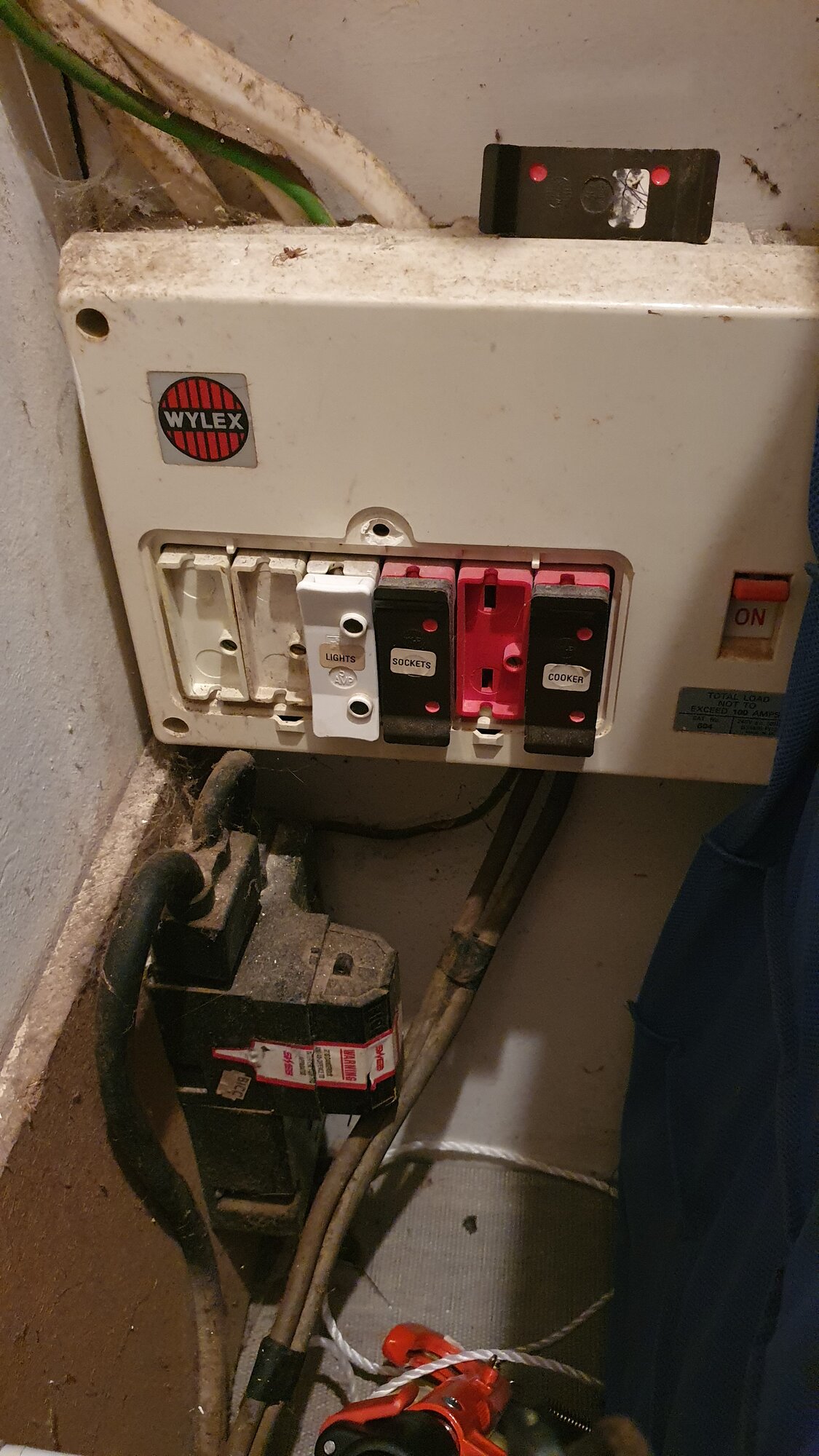Hello! New here.
Looking for a bit of advice before we call an electrician so we know what to expect.
Just moved into an old house with this fuse board:
Would it be possible to have the fuse board upgraded without having to have the whole house rewired? Or is it not possible to tell?
Many thanks
Emma
Looking for a bit of advice before we call an electrician so we know what to expect.
Just moved into an old house with this fuse board:
Would it be possible to have the fuse board upgraded without having to have the whole house rewired? Or is it not possible to tell?
Many thanks
Emma


